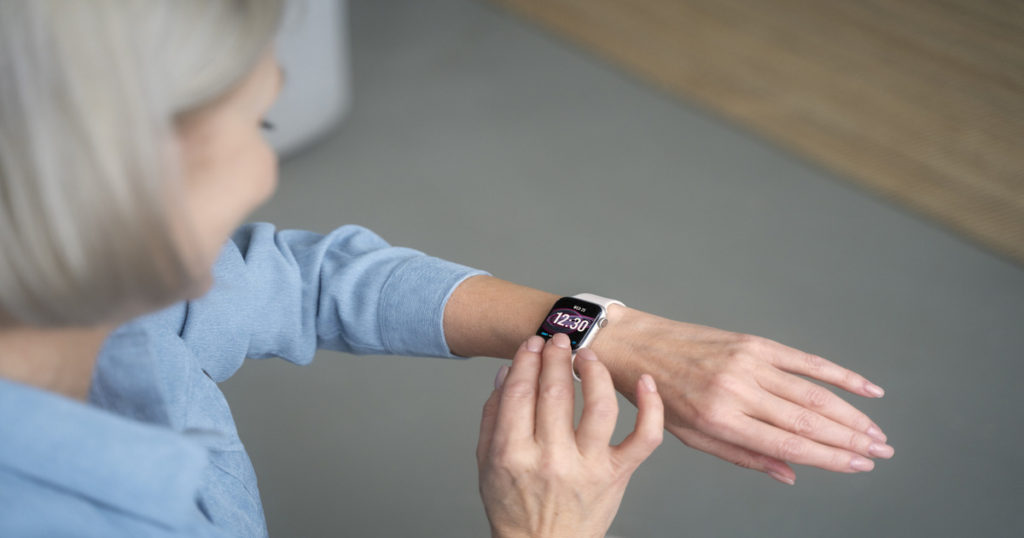Safety First
If you’re a caregiver who cares for a parent or loved one with memory loss, dementia, Alzherimer’s or more- then you know how important it is to keep that person as safe as possible while at home and when out of the home too.
There are many cutting edge technologies, as well as easy and low-cost options that can help solve some of the most common safety problems in the home. However, keep in mind that no matter how much you safety proof the home for your loved one, close supervision of the person with memory loss is still needed.
Safety from Wandering and Getting Lost
People suffering from dementia can often wander on their own and is at risk of getting lost and/or injured. There are several options for keeping your loved one safe from wandering including:
- GPS Enabled wearable tracking devices
- Motion sensors at doors and windows
- Slide bolt locks at the top of doors leading to the outside
And don’t forget about all the enhancements to the quality of life for older adults living with memory loss that comes from adapting smart home technology such as sensors, voice activation, and Bluetooth to help you the caregiver and the care recipient.
Making the Kitchen Safer
One of the top 3 home safety problems are accidents at the stove, these can happen to those who are not using the stove to cook. There are numerous ways in which to make the kitchen safer for those with memory loss including:
- Remove Stove Knobs or Install Safety Stove Knob Covers
- Install iGuard Stove a lock that gives a caregiver complete control in disabling the stove whenever they want. It is a hidden button and can be turned on or off in seconds
- Install a nightlight in the kitchen to avoid accidents
- Remove scissors and knives from reachable areas
- Remove cleaning supplies that can be toxic, from reachable areas
- Make sure to un plug small appliances like the coffee maker, microwave and toaster after use.
Keeping the kitchen, a safe and secure environment for the elderly or those living with memory issues is not always easy, but it can be accomplished through a series of steps. Many people keep medicines, vitamins, and supplements in the kitchen. Make sure to “hide” prescriptions and over-the-counter meds in a cabinet or lock them away safely in a lock box.
A great option for a daily medication dispenser like the “E-Pill Med Time XL Automatic Pill Dispenser” that can make your life as a caregiver easier. E-Pill can stock up to 7-days of meds with 4 different dosages a day at the time of day that you select.
Small electrical appliances like your coffee maker, microwave, and toaster – make sure that they are plugged in using a Smart Plug and can only be controlled / turned-on by you the caregiver with a Smartphone app.
Making the Bathroom Safer
Up to 80% of falls in the home are in the bathroom. Anyone can stumble and fall in the bathroom and having poor muscle strength and balance is strongly associated with increased risk.
Most falls occur while:
- Getting in and out of the tub or shower;
- Sitting down and getting up from the toilet; and
- Walking and attempting to use towel bars, sink tops or other objects to support balance.
Installing safety features in the bathroom is key to reducing the risk of falling. When making a bathroom safer for your loved one, consider the following options:
- Install grab bars at the front and side walls of the shower and near the toilet, making sure that the grab bars are screwed into wall studs.
- Install bathtub rails that fit tightly over the tub edge.
- Install motion sensor night light.
- Use non-skid appliques or bathmat in the shower / bath tub.
- Use a shower bench / chair in the shower or tub that has a back since it will be more stable than a bench or chair without a back.
- Replace shower head with a handheld wand.
- Remove glass shower doors and replace with a shower curtain and tension rod.
Another tip is to ensure to reset your water temperature to 110-120 degrees on your water heater. This temperature feels warm for bathing but will not cause a burn if only the hot water is turned on accidentally.
Moving About the Home Safely
Make sure walking surfaces are flat, slip resistant, free of objects, and in good condition. Are there steps in the home? Consider putting handrails on each side of the steps for easier navigation. Highlight step edges with contrasting tape or paint to make steps more visible. Put one strip across the entire edge of each step.
Increase the brightness of your rooms with lamps and light fixtures to improve vision. Extra light will also help decrease confusion in the evening for the person with memory loss. Use a nightlight in a hallway near the bedroom and bathroom to guide your loved one.
Remove small area rugs that are nonskid, these may cause someone to trip and fall. Falls are the most common cause of injuries resulting in hospital admissions among older adults. Wear shoes both inside and outside the house and going barefoot or wearing slippers.
Keeping the Memory Loss Care Recipient Safe and Sound
How do you help the person with memory loss become a passenger instead of a driver? Seeing the car keys can lead to a desire or attempt to drive even if the person with memory loss has stopped driving. Make sure to hide car keys – out of sight, out of mind.
Does your loved one have access to a bicycle? Lock the bicycle in the garage or shed, or let the air out of the tires so your loved one isn’t tempted to take a ride.
Power tools and toxic lawn chemicals could be lethal if used improperly or ingested. Lock chemicals, power tools and hand tools away in the basement, garage, or shed. If that is not possible, remove and disable the equipment. A tragic accident can happen in just a matter of seconds.
Remove all guns and firearms or store them in a locked cabinet or closet. About 40% of households in the U.S. have a gun. Risk of injury is greater when a household member has memory loss. And never leave guns loaded. Consider a gun lock; it attaches to the gun to prevent it from firing. And do not keep ammunition where it can be found easily.
Be Prepared for Emergencies
Make sure to program all emergency phone numbers into every telephone in the home including Smartphones. Keep your Smartphone and a flashlight at your bedside.
Give a spare key to a neighbor or nearby family member, hide a spare key outside the house in case your loved one accidentally locks you out of the house.
It is important to have an emergency plan for you and your loved one to exit the home in case of natural disaster. Ensure that you have working smoke alarms and carbon monoxide alarms on each level of your home, including the basement – and don’t forget to check the batteries on a monthly basis.
A caregiver’s approach to safeguard your loved one’s home will naturally depend on the cognitive levels of his or her loved one. Progress in technology is continually growing and being built upon. So, make sure to consider using adaptive technology and other safeguards to make your everyday tasks easier and your loved ones home safer.




